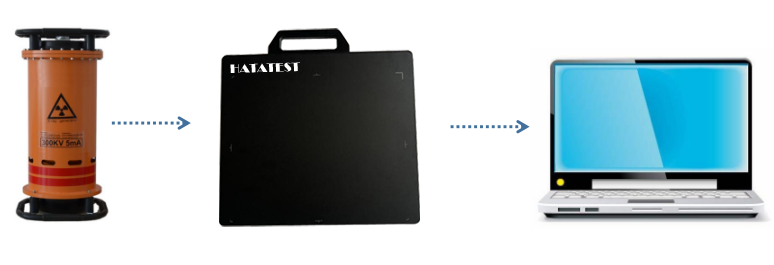
Aerospace
The sector leads the way in high-performance structural materials but life-cycles are long, certification processes are comprehensive and costly, and environmental targets for light-weighting are challenging. Whilst NDT is used extensively for structural-integrity inspections, the sector could further benefit from its use in the design and manufacturing stages to create more efficient, lighter-weight designs.
There is also a strong imperative to reduce inspection costs and aircraft downtime, which demands faster inspections, new techniques to inspect new materials and find ever smaller faults to fulfil the society’s expectations of safe air travel.
Automotive
While NDT has been widely used for high-performance ‘super-cars’ and motorsport due to the performance enhancements it offers and the high value of components, mass manufacturers have relied on it only for specific production problems such as for quality control of spot welding or adhesive bonding. Solutions are then automated and implemented on production lines.
However the move to electric vehicles is driving a step change. Whilst there is potential for improved battery efficiency, the biggest increase in fuel efficiency will come from light-weighting. Even mass-produced cars will contain significant amounts of composite material which will change design, production and in-service inspection requirements.
Marine
Whilst the marine sector has traditionally used NDT to meet safety standards and ensure cost-effective maintenance, the use of new materials is driving demand for new techniques. Our recent workshop on marine composites identified a wide range of requirements. Some of the issues can be solved by improved leadership and a working group is being established to achieve these training, certification and standardization objectives. However, others require technological solutions and will only be resolved by the industry engaging more closely with the NDT community.
Nuclear
NDT plays a central role in the supply of energy in any modern industrial society. Nuclear energy rightfully demands the highest standards of safety, and require inspection of components and plants throughout their lifecycle. Once again, materials offering the desired performance can have particularly demanding properties that push the capabilities of NDT, and are strong drivers for research. As hazardous environments demand remote operations, the industry is also increasingly drawing on newly-available robotic techniques.
Wind and renewables
Renewable energy relies on low-cost, large-scale, and numerous distributed power production facilities. The drive to lower the costs means, for example, huge offshore wind turbines which test the limits of engineering materials, and are expected to operate almost continuously for 25 years in the hostile marine environment. Such facilities are often remote and difficult to access and require very large area inspection coverage at a low cost to ensure economic operation. Trends include new developments in composite inspection, robotic delivery and the use of permanently installed sensor networks.
Industry 4.0
The Fourth Industrial Revolution is happening all around us, from self-driving vehicles to ‘healthcare’ robots and the transformation of industry and infrastructure. With the trend for ever more products and systems being connected to the internet of things, NDT will be impacted by Industry 4.0 and will also be an enabler for the transition, with embedded sensors providing some of the data necessary.
Despite its critical role it has played in industry and in our daily lives, NDT has traditionally operated behind the scenes. Perhaps it is now time for it to come into the spotlight.
-
 Sales@hata-ndt.com
Sales@hata-ndt.com -
 +86 371 63217179
+86 371 63217179










